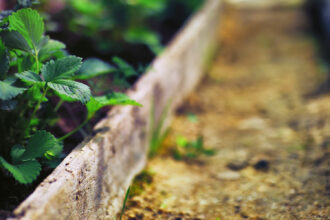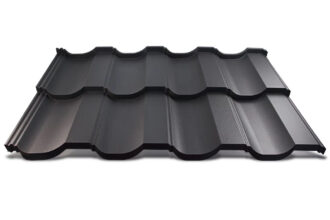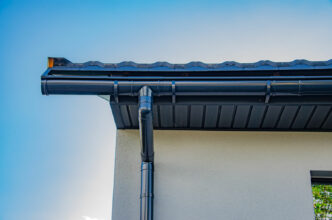The structure of the roof – roof framework is a key element that determines the stability of the roof. It is referred to as the skeleton or the backbone of the roof. It constitutes the basis and it is a support for other materials that are used for roof construction. Therefore, special attention should be paid to the materials of which the roof framework is made – it should be solid, robust and healthy.
What type of timber is suitable for the roof framework?
Roof framework are made of timber. For the construction of a roof framework, we use mostly timber from conifers. Pine is the most commonly used type, but spruce and fir can be successfully used in the construction of a roof framework as well. Other types of wood that work well for roof frameworks are larch and Douglas fir.
Materials for the roof framework – what to avoid?
When purchasing the materials for the roof framework, pay attention to whether the quality of the sawn timber meets the requirements. If you can spot any flaws in this raw material early enough, it will help prevent problems later. The defects of sawn timber are the following:
- passing knot – a knot that overgrows a structural element disqualifies such an element as it significantly weakens its durability and is not suitable for use in a roof framework,
- sick knot – a knot that fell out of the wood and left a hole there – such an element may be used for the roof framework, but only if it is cut at the hole and then if the hole is removed,
- high density of knots – if there are 2-3 knots for every 1 m2 of wood, they cause significant weakening and the wood cannot be used for the roof framework,
- crack – if the crack occurs on a longer part of the timber, and the thickness of the crack is 1-2 mm, then such an element cannot be used for roof framework,
- plug – the bark’s growth into the wood – a single defect may be cut off and the element may be used, while a bigger number of plugs disqualifies the material from being used for the roof framework,
- huba – a fungus with a pink-orange color – leads to a soft rot of the timber and makes the wood unusable in construction;
- fiber twist – to a large extent, it reduces the durability of the timber, and therefore such timber is not suitable for a roof framework.
Properties of the timber for the roof framework
In addition to the above-mentioned timber defects, one should also pay attention to several other factors that determine durability, strength, resistance to biological corrosion, and to other external conditions. The most important of those are the following:
- wood moisture content – it should be between 15 – 18%, timber with a moisture content higher than 24% cannot be used for the roof framework, if it is too high – the material should be dried,
- storage method – the timber cannot be placed directly on the ground, concrete or other sources of moisture, it should be ventilated in a proper manner – individual layers should be separated from one another with strip spacers, it cannot be exposed to strong and long-lasting sunlight,
- impregnation against pests – remember to choose only healthy elements as timber for the construction of the roof framework, i.e. elements with no pests, to protect the timber against being infected by insects and larvae feeding on timber (house knocker and common drain can almost completely destroy the elements of the roof framework), several layers of impregnation should be applied – all should be done in accordance with the manufacturer’s recommendations,
- protection against fire – preparations containing inorganic salts, compounds of boron, phosphorus, sulfur, zinc, as well as modifying agents can be used in the form of a liquid concentrate or powder, from which the solution is prepared by diluting with water in the proportions indicated by the manufacturer.


